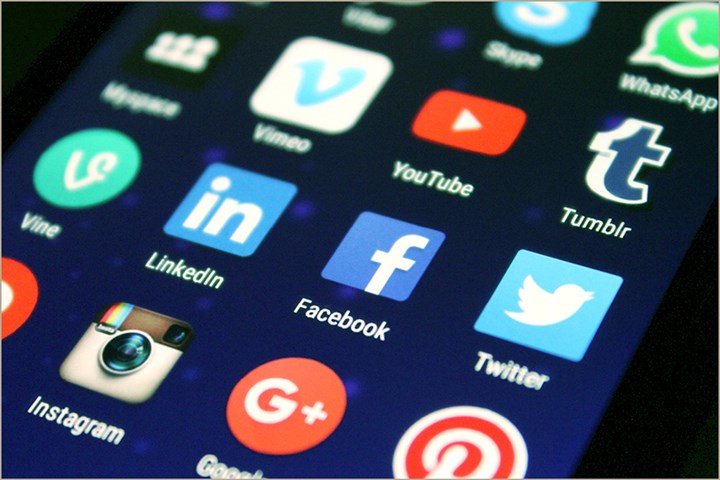Social Media: A Newer, Needed Toolset for B2B Marketing Success
Social media marketing has become a must-have in B2B. Harnessing its power, taking the reins of the journey and avoiding pitfalls are essential.
By Mark Semmelmayer, CBC
Chief Idea Officer
Pen & Inc. Marketing Communications

Maybe you can teach an old dog new tricks. Case in point. Since retiring from “active service” and moving to this lovely island 4 years ago, my favorite activity has been working with our local community theater group, The Island Players. Aside from acting in the shows, I also handle advertising and publicity for the group. I’ve learned something.
As you might imagine, trying to put butts in the seats during and immediately post-COVID was challenging. But, the 2022 and 2023 seasons have been much better, thanks in part to a change in marketing strategy. That change involved the use of social media.
In 2022, beside a traditional print/radio/outdoor/PR promotion regimen, I started to make heavier use of a Facebook group. There was a noticeable increase in clicks, messaging and comments. It was accompanied by increased show attendance and revenue. In 2023, we started using Twitter and Instagram (note the “we” . . . I don’t even have a Twitter account) and results were even better. Hmmmmmm.
Besides tickets sold, some things stood out. More audience engagement and commentary. More patron engagement and a noticeable, if incremental, decrease in the average age of show patrons, where the typical demographic is 55+. We were on to something new.
So, what about social media marketing in B2B today. Over the last 8 or 9 years, as detailed in Gardner’s Annual Media Influence survey, social has been viewed as a pretty bauble, rather than a useful tool. I suspect that needs to, and is, changing to ensure future success.
What follows is a fast take on the evolving role of social media in B2B. Of necessity, a quick hit. Social media marketing is a deep and wide subject. All we can do is high-point some thinking on how social media works and what you need to aim for (objectives), how to employ your social efforts (strategies), as well as some watch-outs, and steps to take to avoid the pitfalls.
Social Media, B2B and Generational Influences
If you’ve read some previous blogs, I’ve been tracking the rise of digital means in B2B in an effort to define the demographics and psychographics of its impact. For the time being, I think there are three sub-groups:
Digital copers: Probably 55+, who come to the digital world grudgingly.
Digital adopters: Roughly 45+, who started with flip-phones but have been close enough to digital to be comfortable with it.
Digital natives: 25+. Born with a smartphone in their hands and apps soft-wired into their brains.
Think about yourselves as marketers, as well as your customers as buyers. Recognize these mind-sets as stakeholders? The key lesson here lies in considering the impact of digital and social media within these sub-groups. Digital and social usage, and credibility, increases in inverse proportion to age. Decision making power increases in direct proportion to age.
Basic Social Media Objectives
At its core, the objective of social media marketing is creating engagement and interaction with customers. The more they share, comment and react to social media messaging the better. In other words, engaging with followers, customers, and influencers with the intent of building a community around your brand.
Basic Social Media Strategies
Social media marketing leverages the power of popular social networks to achieve marketing and branding goals. But it’s not just creating business accounts and posting when you feel like it. Social media marketing requires a 24/7 effort and a strategy with measurable goals, and includes:
• Maintaining/optimizing profiles.
• Posting pictures, videos, stories, and papers that represent your brand.
• Responding to comments, shares, and likes and monitoring your reputation.

Social media marketing may also include paid social media advertising, but we’re only dealing with free outlets here. In that case, don’t use social media to pitch. Add value through useful content. That is, organically promote your business and others will promote it for you. Something I read recently characterized good social media marketing as following a 70/20/10 rule. Postings should be:
- 70% Informational
- 20% Emotional
- 10% Promotional
Strikes me as sound guidance for creating content that engages and informs the target.
Best Platforms for B2B Social
- More than 70% of people who have a positive experience with a business on social media will recommend that business to their networks.
- Facebook users click on 12 Facebook ads on average every month.
- 81% of people use Instagram to research products and services.
- Nearly 80% of Twitter users feel more positive about a business when they get a response to their tweet.
- 4 out of 5 people on LinkedIn drive business decisions.
- 46% of TikTok users engage in the app without any other distractions.
While difficult to determine specific usage for B2B, separate from consumer social, the top apps and relevant demographics appear to be (in descending order of usage):
Platform Demographic/Psychographic
Facebook 25-34, Boomers
YouTube 18-35, Broad-based
Instagram 18-35, Millennials
Twitter 25-49, Educated, wealthy
LinkedIn 45-60, Professionals
TikTok 17-30, Young professionals
Want the attention of younger segments of your target audience? This is Exhibit A.
Watch-outs and Best Practices
Social media is today’s Wild West in terms of digital information. No rules. The good news? Unfettered and free, users can openly post, share, swap and opine about your product or service. The bad news? Users can openly post, share, swap and opine about your product or service, regardless of facts to prove their point. So, you need a cop to apprehend misinformation and a lawyer to smooth the waters.
Monitoring your reputation is a basic social media strategy. Just as positive posts demand positive response, negative posts deserve the same. Left unanswered, negative posts can become viral, getting shared from person to person until rumor becomes de facto reality. That’s the “cop” part.

Sometimes, the post or comment requires something other than an online response. Direct, one-on-one communication offline to mollify the irritated stakeholder, hopefully leading to a retracted post, or a more positive second post. Exactly how that’s accomplished depends on circumstances and the importance, relatively speaking, of the “ruffled” poster. In other words, basic human communication. That’s where the “lawyer” part comes in.
As I think about this, one recommendation becomes clearer. Don’t try this at home.
Solid social media marketing requires multiple platforms. This can be resource intensive. The more you grow your audience, the harder it will be to keep up. That leaves you with two choices: a staff member or members dedicated to managing your social media efforts, or an outside social media service/agency. Both have merit. Since a dedicated staff becomes a fixed cost for the organization, it’s often easier to sell in outside services on an as-needed or contractual basis.
Author’s Note: A big thanks to WordStream and their blog, “Social Media Marketing for Business” (https://www.wordstream.com/social-media-marketing). Not only did it provide me with much thought for this blog, it’s chock-full of links to blogs that explore specifics on many of the topics touched on here.
Need more information?
Mark Semmelmayer, CBC
Chief Idea Officer
Pen & Inc. Marketing Communications
Saint Simons Island, GA
770-354-4737
LinkedIn
About the Author
Mark Semmelmayer, CBC
Mark is a past international chairman of the Business Marketing Association (BMA), the 2015 recipient of BMA’s prestigious G.D. Crain Award and an Inductee into the Business Marketing Hall of Fame. A 40-year B2B marketing pro, including 32 years with Kimberly-Clark, he’s the founder and Chief Idea Officer of Pen & Inc. Marketing Communications, a consultancy in Saint Simons Island, GA.
RELATED CONTENT
-
B2B Research: A Powerful Marketing Tool
The Gardner Business Media Industrial Buying Influence 2020 study findings can be used as a powerful marketing tool. The study provides demographic and psychographic details that help you better understand customers and prospects. We know knowledge is power and knowing how B2B industrial buying dynamics are changing is a key to successfully empowering your marketing.
-
Everything You Wanted to Know About Industrial Marketing Today but Were Afraid to Ask
A game plan for new realities in industrial marketing. Trends becomes a tide. Younger buyers will soon call the shots. Be ready!
-
Marketing Messages That Cut Through The Noise
We’ve talked about customer journeys, emotional intelligence, and finding and retaining customers. You’ve tuned up your marketing messages. Now it’s time to decide where to place them, so customers tune in. In a world with endless channels of information, how do you become a source of knowledge — not noise? One step at a time.


